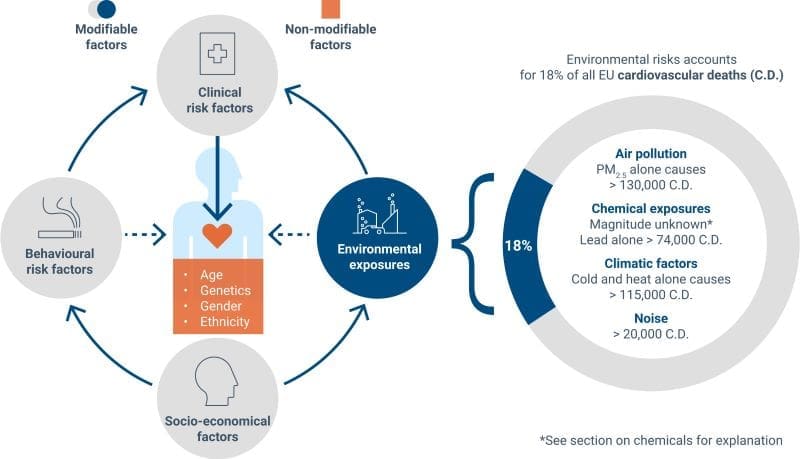Copenhagen, Denmark | Muser NewsDesk
Environmental conditions such as air pollution, heat, and exposure to harmful chemicals are responsible for around one in five cardiovascular deaths in the European Union, according to a new briefing by the European Environment Agency (EEA). The report shows that many of these deaths could be prevented through stronger environmental protection.
Cardiovascular disease is the leading cause of death in the EU. More than 1.7 million people died from it in 2022, representing about one third of all deaths that year. The EEA estimates that environmental factors contribute to at least 18% of these cases. Every year, over six million new cases of cardiovascular disease are diagnosed, costing Europe about EUR 282 billion.

While genetic and age-related factors cannot be changed, environmental and behavioural risks can be reduced through effective policies. The EU’s progress in improving air quality demonstrates the impact of such measures. The Union is already on track to meet its zero pollution action plan target of cutting premature deaths linked to air pollution by more than 55% by 2030 compared with 2005.
The European Commission’s new plan for cardiovascular health, now under development, offers an opportunity to strengthen how environmental factors are integrated into public health strategies.
According to the EEA, key environmental drivers of cardiovascular disease include air pollution, extreme temperatures and weather events, traffic noise, and chemical exposure to toxic substances such as heavy metals and endocrine disruptors. These risks vary across regions but can be tackled through better implementation of existing laws, notably the Ambient Air Quality Directive, which aims to align EU standards with World Health Organization recommendations.
Further action could include reducing transport noise, enforcing chemical regulations, phasing out cardiotoxic substances, and promoting safer alternatives. Health systems can also prepare for climate-related cardiovascular impacts by using early warning systems, public campaigns, and targeted support for vulnerable groups.
The EEA briefing also recommends increasing environmental content in medical and nursing education, improving public awareness of environmental stressors, and expanding nature-based solutions such as urban greening and blue spaces. These measures can improve air quality, lower noise levels, and encourage physical activity.
Promoting the One Health approach, which links the well-being of people, animals, and ecosystems, would also bring broader benefits and help protect millions of Europeans from preventable cardiovascular disease.
Article Source:
Press Release/Material by European Environment Agency (EEA)
Featured image credit: jcomp | Freepik




